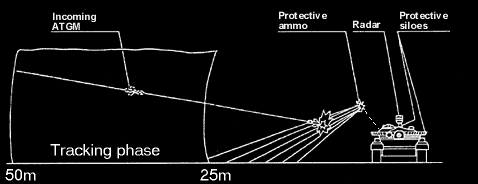
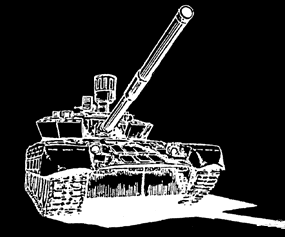
The Arena tank active protection system belongs to the latest generation of Russian APS, together with Drozd-2 APS.
Arena's direct predecessor was Shatjor APS that was installed on the experimental Obiekt 478M MBT. Both systems have been designed by the Kolomna-based Engineering Design Bureau (KBP) together with other allied enterprises.
Arena is intended to protect tanks from antitank grenades and ATGMs, including some variants of top-attack ATGMs.
The system is described in the Russian patent RU 2102678 C1
The system incorporates the following engineering solutions:
Protective ammunition is housed in silo sections arranged around the turret. The rack-mounted radar is fixed on the turret roof. All other equipment is housed inside the turret. Connecting cables from the turret run inside the radar rack without affecting the sealing of the fighting compartment.
The system is switched on from the commander's control panel and then operates automatically. On completion of power-on self-test, the system switches to combat mode. All information on the modes of operation and serviceability of the system and its integrated units is displayed on the control panel.
|
|
|
|
In emergency the commander (operator) can manually operate and detonate protective ammunition from the control panel.
The number of unused protective ammunition is displayed on the control panel screen.
Each protective ammunition protects a certain azimuth sector, with destruction zones of adjacent ammunitions overlapping each other, thereby intercepting the targets repeatedly approaching the tank from the same direction. The number of mounted protective ammunition is expected to be usually sufficient to defeat all the threats to the tank during a single combat mission without replenishing the protective ammunition.
The system operates in any weather, round the clock, detects and engages targets under all conditions of tank combat employment, including while on the move with a turned turret.
The sector of the MBT protection in azimuth is enough to provide front, side and top protection. It moves together with the turret and overlaps the range of firing angles against tanks during their attack of the enemy's deep echeloned defensive positions.
The circuit-structural design of the radar and methods of radar data processing ensure the high immunity of the system to ECM.
The Arena system does not react to: targets at a range of over 50 meters from the tank; small-size targets (splinters, small caliber projectiles); targets flying away from the tank, including projectiles fired from its own gun; slow flying objects (pieces of earth, birds etc.); shells and projectiles exploding around the tank; projectiles flying over the tank, i.e. not crossing the protected projection of the tank.
All this resulted in radical reduction of false alerts and "unwanted" information entering the computer for analysis and processing and also allows operation only if a dangerous target appears within the system's zone of action and when this target is about to hit the tank.
Considerable attention was paid to the safety problem during the development of the system. There are several safety blocks in the APS launching circuits, which can be only released when the system equipment is in combat mode, the dangerous target is detected and there is a clear indication that this target is about to hit the tank.
There is no danger for the crew members when a protective ammunition operates. The level of pressure and impulse noise at the workstations does not exceed conventional norms when hatches are closed. The system does not operate when the hatches are open.
Owing to the small size of the dangerous zone (20-30 meters around the tank) the system is not hazardous to the accompanying infantry and external tank equipment and the system's units during operation of the protective ammunition. This is ensured by the selected layout and design of the protective ammunition, which forms no lethal splinters during exposition except directed flow of destructive elements that is ejected downwards. The system is also fitted with external warning lights that generate signals to infantry following the tank about the system's acivation.
The APS is protected against bullets and splinters and protective ammunition does not detonate in siloes when fired at by small caliber projectiles.
Provision is made for the complete electromagnetic compatibility of the tank protection system with other tank systems. The Arena system does not restrict the formation of tank groupings in terms of electromagnetic compatibility.
The equipment of tanks with protection systems can ensure their survivability on the battlefield during the offensive operations. In this case losses are reduced 1.5 - 1.7 times. It should be noted here that the Arena system intercepts the most dangerous targets for the tank (ATGMs and antitank grenades) that the tank cannot effectively handle. This occurs when ATGMs are launched from a range of 3-8 km, including ATGMs launched from helicopters and when concealed grenade launchers fire on the tank at short ranges and great variety of aspect angles.
The combat effectiveness of tanks equipped with protection systems can be dramatically increased if the other side is equipped only with light antitank weapons, for example, in local conflicts and during peace-making operations.
Compared to ERA, APS advantages are: destruction of antitank weapons away from the tank's armor; capability to intercept targets with tandem warheads; capability to protect vulnerable spots of the tank (periscopes, joints etc.); more effective azimuth sector of protection with equal weight of protection system.
However, active protection should not be considered an alternative to all conventional types of protection; on the contrary, the problem of increasing tank protection should be solved via a reasonable hybrid of the passive (armor) protection, optronic counter-measures, ERA and active protection. In this case, the tank developer should determine the optimal ratio of such a hybrid to ensure the required level of tank protection, based on "efficiency-cost" criteria.
|
| ||||||||||||||||||||||
|---|---|---|---|---|---|---|---|---|---|---|---|---|---|---|---|---|---|---|---|---|---|---|---|
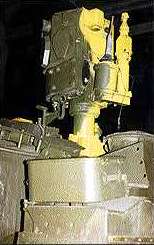
|
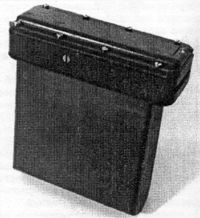
|

|
| ARENA radar rack | ARENA ammo cassette | The damage inflicted by Arena splinter stream on the casing of a Maljutka-2 ATGM |
Videos of Arena operation
(Require DivX 5.0 codec)
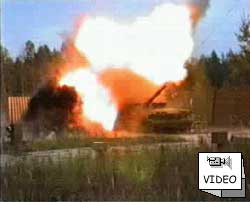
| 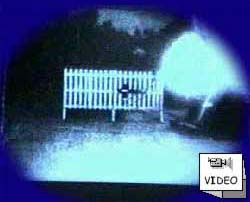
| 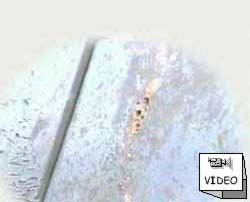
|
| Against SPG-9 RR | Against 9M111M Fagot-M ATGM | Against 9M114 Shturm ATGM |

This page is © 1998-2003, Sauron's Creations.